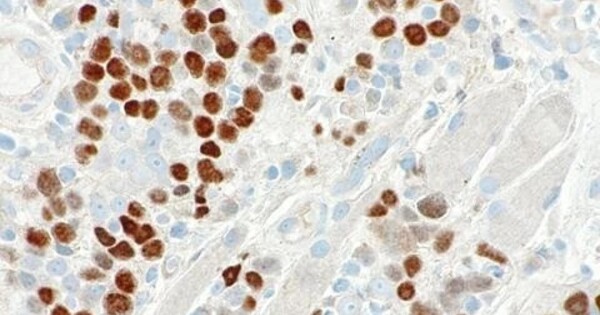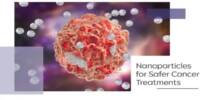A novel vaccine against cancer-causing human papillomaviruses (HPV) is designed to boost the number of HPV vaccines, particularly in developing countries. Scientists at the German Cancer Research Center (DKFZ) created a completely new vaccination approach for this aim. The vaccine is cheap and protects mice from nearly all cancer-causing HPV strains. In addition to preventing new infections, the vaccination induces cellular immune responses against HPV-infected cells, which may have a therapeutic effect on existing infections.
Cervical cancer, caused by specific kinds of human papillomavirus (HPV), is the fourth most frequent malignancy in women globally. The majority of instances are detected in developing countries, mainly South East Asia, Africa, and Latin America. The carcinogenic, so-called risk HPVs are primarily transmitted through sexual contact. The infections are extremely prevalent. It is estimated that up to 80% of the population will come into touch with these viruses over their lifetime. In addition to cervical cancer, infections with high-risk HPV have been linked to oral cancer, anal cancer, and other genital cancers.
Our major goal is to increase vaccination rates against HPV worldwide, especially in countries with limited resources. Our new, heat-stable vaccine is inexpensive to produce, protects against all cancer-causing HPV types and can potentially neutralize existing infections by combining it with E7.
Dr. Müller
The vaccines currently available against cancer-causing HPV are effective, but have limitations. They are temperature-sensitive and therefore require continuous refrigerated transportation, which poses a logistical problem in some countries. Their production is complex and expensive. In addition, they are only effective against certain cancer-causing HPV types. Above all, however, the established HPV vaccines show no therapeutic effects on existing infections.
In developing their new HPV vaccine, Müller and his colleagues took a systematic approach to solving all these problems. The basis for this was the “predecessor model” PANHPVAX, which was also developed in Müller’s laboratory: this exclusively prophylactic vaccine has already proven to be safe in phase I clinical trials and induces protective antibodies against all cancer-causing HPV as well as against some cutaneous papillomaviruses.
For PANHPVAX, the researchers used small fragments of the L2 protein from eight different HPV types. These fragments differ only slightly between different HPV types and can therefore trigger a very broad immune response. To make these protein snippets immunogenic, they were inserted into a suitable scaffold protein derived from a heat-loving microorganism (Pyrococcus furious).

“In our current work, we have added a therapeutic component to PANHPVAX, i.e. an antigen that stimulates the cellular immune response,” explains Müller. The DKFZ virologists chose the protein E7 of the two high-risk types HVP16 and 18. It is formed very early in the course of an HPV infection in the infected cells and is therefore an ideal target for a cellular immune response to eliminate these cells. However, E7 is also responsible for the malignant transformation of HPV-infected cells. The researchers therefore first had to modify the vaccine antigen so that it no longer posed a threat.
In preliminary investigations, the novel vaccine cPANHPVAX was able to stimulate neutralizing antibodies against all carcinogenic HPV in mice while also activating cytotoxic T cells against the HPV16 protein E7.
These encouraging results prompted the researchers to develop cPANHPVAX in accordance with Good Manufacturing Practice (GMP) criteria for medicines. The vaccine created in this manner can be utilized in clinical trials.
“Our major goal is to increase vaccination rates against HPV worldwide, especially in countries with limited resources. Our new, heat-stable vaccine is inexpensive to produce, protects against all cancer-causing HPV types and can potentially neutralize existing infections by combining it with E7.” In order to further investigate the promising properties of cPANHPVAX, the researchers are currently developing a concept for clinical testing of the vaccine.
















